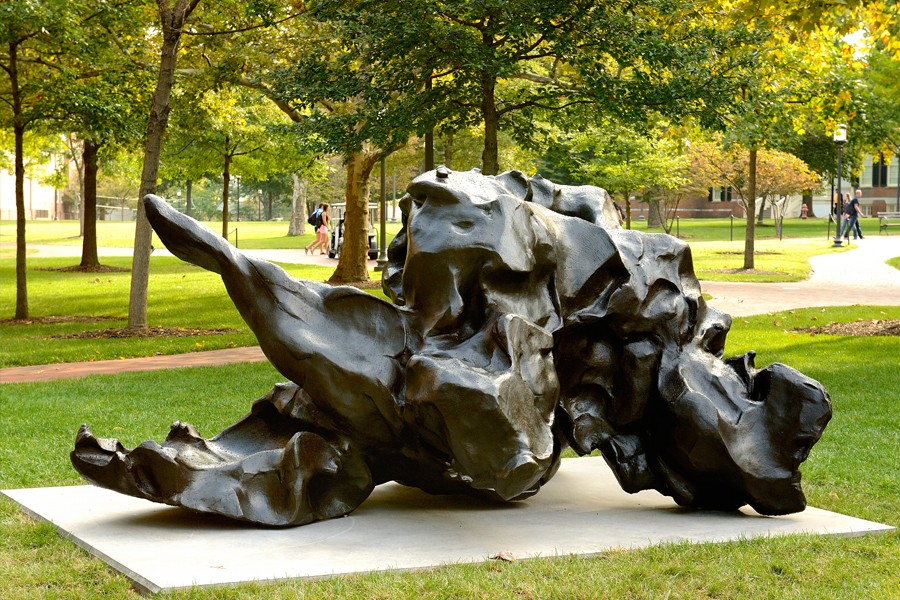One of artist Vanessa Hoheb's ongoing projects is making bronze castings of the hands of some of America's most distinguished contemporary artists: Chuck Close, Eric Fiscl, Robert Indiana, Jasper Johns, Maya Lin, Judy Pfaff, Richard Prince, Kiki Smith, and more. It's a way to focus on the part of the body that manipulates a brush or pencil, the site where what an artist is thinking is articulated into a vocabulary.
She's witnessed this process her entire career, first in her father's studio and later on her own, working with artists such as Willem de Kooning, Louise Nevelson, Isamu Noguchi, Frederick Hart, and Johns to translate sculpture models into finished pieces.
Hoheb visits Johns Hopkins University's Homewood campus today at 5 p.m. to talk about the role of fabricators who collaborate with artists to turn ideas into monumental works.
"Too often, we imagine works of art simply as feats of ideation," said Molly Warnock, an assistant professor in the Department of History of Art and art critic who will lead the discussion with Hoheb in Mudd Hall. "Vanessa's talk is a rare opportunity to learn, from an expert intimately involved in the process, about the intensive, behind-the-scenes dialogue that artists have long entertained with highly skilled artisans and fabricators—and that allows them to translate initial thoughts into final products, often with considerable adjustments along the way."
Hoheb's talk celebrates the renewal of the five-year loan of de Kooning's Reclining Figure (1969-1982) to the university by The Willem de Kooning Foundation. The monumental bronze sculpture, located between Remsen and Dunning halls on the north side of campus, arrived at Homewood in 2013.
Amy Schichtel, executive director of the foundation, said she sees its loan program as an opportunity for learning, about de Kooning and about art in general.
"The loan program is most often responding to the requests of curators and community leaders who could not otherwise afford to include his work in their presentations," Schichtel wrote in an email. "They want to present works that provoke thought and curiosity, and his does that."
She added that the foundation is enriching its loan program with a series of talks designed to encourage dialogue about the loaned pieces from people who worked with de Kooning, with Hoheb's being the first. In the early 1980s, Hoheb and her father worked with de Kooning to translate three of his hand-sized 1969 sculptures into larger works.
Willem de Kooning was one of the original abstract expressionist artists, a group responsible for the historic shift of attention in the arts from Paris to New York City in the years following World War II. He became one of the most influential artists of the 20th century. His work has been widely collected and exhibited around the world.
Reclining Figure began in 1969 as one of 13 small-scale clay figures that de Kooning modeled by hand while visiting a friend's foundry in Rome. It was brought to Johns Hopkins as part of an effort to add to the university's rich and diverse collection of public art by both major and emerging artists.
"In addition to making our campus unique and visually interesting, these works inspire curiosity and make us think differently about our surroundings," said Winston Tabb, Sheridan Dean of University Libraries and Museums, who oversees the university's Public Art Program. "They foster ideas and conversations that advance the culture of learning, inquiry, and creativity that characterizes the Johns Hopkins experience."
Posted in Arts+Culture
Tagged art









